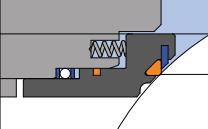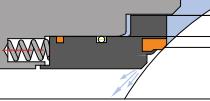When it comes to the seat and sealing of a trunnion mounted ball valve, we often classify them into DBB and DIB type. People usually get really confused about how to differentiate a DBB ball valve from a DIB ball valve.
DBB means double block and bleed. As per API 6D, a double block-and-bleed ball valve is a single valve with two seating surfaces, each of which, in the closed position, provides a seal against pressure from both ends of the valve with a means of venting or bleeding the cavity between the seating surfaces. There is an additional note that this valve does not provide positive double isolation when only one side is under pressure.
DIB means double isolation and bleed. API 6D defines a DIB valve as a single valve with two seating surfaces, each of which, in the closed position, provides a seal against pressure from a single source, with a means of venting or bleeding the cavity between the seating surfaces, with an additional note that this feature can be provided in one direction or in both directions.
In other words, a DBB ball valve has two single-piston-effect seats which are internally self-relieving. In the oil and gas application, most of the industrial valve users will use DBB ball valves.
DIB ball valves can be classified into DIB-1 and DIB-2. A DIB-1 ball valve has two double-piston-effect seats. DIB-2 has single-piston-effect design (DBB) for one seat and double- piston-effect design (DIB) for another seat.

(schematic of a DIB ball valve)

(schematic of a DBB ball valve)
DBB means double block and bleed. As per API 6D, a double block-and-bleed ball valve is a single valve with two seating surfaces, each of which, in the closed position, provides a seal against pressure from both ends of the valve with a means of venting or bleeding the cavity between the seating surfaces. There is an additional note that this valve does not provide positive double isolation when only one side is under pressure.
DIB means double isolation and bleed. API 6D defines a DIB valve as a single valve with two seating surfaces, each of which, in the closed position, provides a seal against pressure from a single source, with a means of venting or bleeding the cavity between the seating surfaces, with an additional note that this feature can be provided in one direction or in both directions.
In other words, a DBB ball valve has two single-piston-effect seats which are internally self-relieving. In the oil and gas application, most of the industrial valve users will use DBB ball valves.
DIB ball valves can be classified into DIB-1 and DIB-2. A DIB-1 ball valve has two double-piston-effect seats. DIB-2 has single-piston-effect design (DBB) for one seat and double- piston-effect design (DIB) for another seat.

(schematic of a DIB ball valve)

(schematic of a DBB ball valve)
